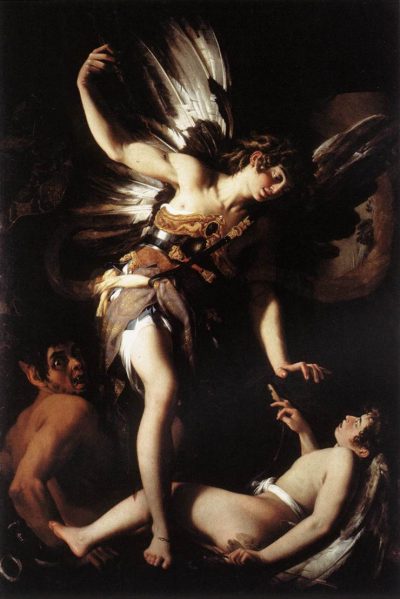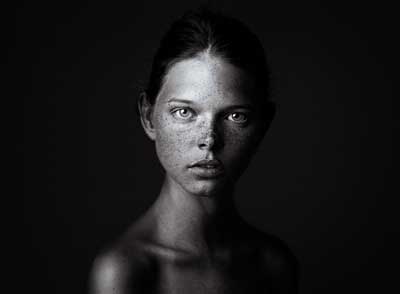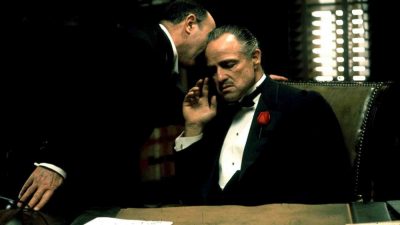Why High Dynamic Range Can Be A Trap
I came across this video on YouTube yesterday and I cheered “hoorah!”. It’s not just me – someone else gets it. You know, the way people are getting too focused on the technical aspects of filmmaking at the cost of creative storytelling.
Then I started to wonder if it was screwing up my work, too. Since I started writing about smartphone filmmaking (6 posts a week), I’ve been learning more and more about the technical side of filmmaking. That’s got to be good right?
Surely any knowledge is good for us. I still believe that, yes. The problem arises when the technical side of things starts to take over the creative side.
I used to mostly trust my instincts on filming and taking photos. I didn’t know too much about the technical side so I had no choice. Without understanding frame rates or shutter speed too well, I shot a whole feature film.
But now I’ve invited some new friends to my party and they’re talking very loudly. So loudly that maybe I can’t “hear myself think” any more.
Lost in the detail
When I used to take a picture, I used to look what was happening in the frame and see if it had a nice feel to it. I just used to play and see what happened. Now I’m worrying about noise in the shadows and shutter speeds.
And perhaps I’m so focused on this new stuff, I’ve forgotten how to use my instinct.
One of those obsessions is in getting dynamic range. High dynamic range gives you more detail in the shadows and highlights. Which leads many photographers to obsessively work to show as many details in their image as possible.
Instead of, you know, taking a cool photo.
And as our YouTuber Jamie Windsor points out, the amount of detail you see in the shadows is a creative choice. Well, it should be. But when you have obsessed over getting a high dynamic range for months or years, your bain can start to think “high dynamic range = good”.
We can forget there was ever a creative choice and think simply (and stupidly), if my photo or video displays a high dynamic range then I’ve ticked one important box to creating a good photo or video.
But actually that’s nonsense.
Chiaroscuro
Chiaroscuro in art and photography is the use of strong contrasts between light and dark for creative purposes. Some legendary artists developed this technique such as Leonardo da Vinci, Caravaggio and Rembrandt.
This is Sacred and Profane Love by Giovanni Baglione. If he’d wanted to he could have painted details into the shadows. But painters chose not to because they liked the dramatic lighting.
Ask yourself, how does this image make you feel? Thing is, we will all get different feelings from it. And I believe that’s why we sometimes find ourselves obsessing over technical stuff.
When something is subjective, a lack of confidence in ourselves as artists leads us to fall back on things we can quantify. Does the image inspire anyone? I don’t know, but look at the high dynamic range!
Chiaroscuro is also used in photography to create beautiful portraits. How does this image make you feel? How would you feel about this portrait if she was standing before a detailed background?
Why choose to remove detail?
And here we see the same effect in the film The Godfather, a masterpiece of 1970s American cinema.
What happened to all that detail in the shadows? Perhaps director of photography Gordon Willis hadn’t watched enough YouTube videos on the importance of high dynamic range.
Of course, this kind of lighting was used to great effect in the genre of film noir.
How do we find ourselves making this mistake?
Because camera makers and TV makers are trying to sell you their product.
Let’s say you are in the market for a new camera. If you are like me, you will obsessively search for every article or review on the subject of new cameras. And every review and article talks about the dynamic range capability of each camera.
Maybe you never even heard of this thing before. But after reading 15 articles, you can talk about dynamic range like a pro. Or so you think.
After washing your mind with 15+ online reviews, you’re thinking less about beautiful pictures and more about details in the highlights. And of course, all the other technical specs of the camera and the incredible images they will allow you to create.
This is exactly what camera makers want you to think. How will they sell you a new camera if you already have a perfectly good one? By convincing you their new extra stops of dynamic range camera is worth upgrading for.
Camera makers don’t make their money from artists. Truth is, camera makers make their profit from people obsessed with camera specs.
It’s also about confidence
My first screenplay was picked up by a TV company, but when it didn’t end up getting made, I blamed myself. I thought I wasn’t good enough. So I decided I needed to learn how to write a screenplay properly.
In hindsight, that seems rather insane doesn’t it? My first screenplay was accepted by a company screenwriters with 10 years experience would hope to be accepted by. But because it didn’t quite make it I decided I wasn’t good enough.
In hindsight, I should have congratulated myself, “Wow you’re doing something right!”
Instead I decided I was doing it ALL WRONG. So I read a bunch of books that told you “how to write a screenplay”. Act structures, turning points, the point of no return, character arcs and so on. And I remember all the terrible screenplays I wrote as a result.
The problem was I didn’t have the confidence to believe in the art of it as it was so subjective. So I fell back on the only thing I could quantify: the screenwriter checklist.
- Does it have a refusal of the call? Check
- Does it have a point of no return? Check
- Does it have 3 acts? Check
- Does the format meet professional standards? Check
Screenwriting how to books even sometimes have these checklists for you to measure your screenplay by.
But really the checklist should look more like this:
- Does it move people? Uhh..
- Does it connect to something personal to you? Mmm, uh..
- Is it true to life in some way? Oh, uhm…
- Does it reveal something about the human condition in a way unique to you? I uh, well…. um..
And so on. But, whereas as the first checklist is comforting, the second list is confusing and scary. We don’t want to look into ourselves and reflect. We want to write an “entertaining movie”.
That means people cracking jokes, doing cool stuff and having gunfights doesn’t it? Yes, if you’re 6 years old. But let’s not diss 6 year olds. If you quietly observe 6 year olds play, you’ll find them instinctively weaving all kinds of interesting themes into their play.
But when we grow up, we start to think we need to be “good”. That we need to be professional or we’ll be laughed out of tinsel town.
Preying on our insecurities
You can make a profit out of people fears and insecurities. The cost to us is a loss of our creative muscle. It gets crowded out by these loud voices trying to terrify us.
“uhm. I made a movie.”
“YES BUT DID YOU SET THE CORRECT SHUTTER SPEED!”
“YOUR DYNAMIC RANGE SUCKS!”
“YOU CALL THAT SHADOW DETAILS!”
“NEVER SHOW THAT TO ANYONE, YOU FOOL!”
“SHAKY CAMERA?! RRRAGGHHHH!!!”
I’m not saying having a camera with high dynamic range is bad. Of course not. It’s better to have more options.
The problem is, if you spent the last few months thinking about camera specs and high dynamic range. If you just spent some serious $ on a new camera for that reason. Now, you’re going to want to show off your new piece of kit’s capabilities.
You will want everyone to see those shadow details. Which is a bit of a weird way to create art, isn’t it?
So if you’re obsessing over technical stuff, take a step back. Think about Leonardo da Vinci, Caravaggio and Rembrandt and remember the art.
Eager to learn more?
Join our weekly newsletter featuring inspiring stories, no-budget filmmaking tips and comprehensive equipment reviews to help you turn your film projects into reality!
Simon Horrocks
Simon Horrocks is a screenwriter & filmmaker. His debut feature THIRD CONTACT was shot on a consumer camcorder and premiered at the BFI IMAX in 2013. His shot-on-smartphones sci-fi series SILENT EYE featured on Amazon Prime. He now runs a popular Patreon page which offers online courses for beginners, customised tips and more: www.patreon.com/SilentEye




